
Filter News
Area of Research
- Advanced Manufacturing (4)
- Biological Systems (2)
- Biology and Environment (52)
- Computational Engineering (1)
- Energy Science (31)
- Fuel Cycle Science and Technology (1)
- Fusion and Fission (6)
- Fusion Energy (7)
- Isotopes (1)
- Materials (26)
- Materials for Computing (1)
- Mathematics (1)
- National Security (26)
- Neutron Science (9)
- Nuclear Science and Technology (9)
- Nuclear Systems Modeling, Simulation and Validation (1)
- Quantum information Science (2)
- Supercomputing (26)
News Type
News Topics
- (-) Advanced Reactors (26)
- (-) Bioenergy (86)
- (-) Clean Water (31)
- (-) Composites (22)
- (-) Frontier (46)
- (-) National Security (66)
- (-) Physics (43)
- 3-D Printing/Advanced Manufacturing (93)
- Artificial Intelligence (94)
- Big Data (67)
- Biology (102)
- Biomedical (55)
- Biotechnology (29)
- Buildings (55)
- Chemical Sciences (50)
- Computer Science (159)
- Coronavirus (31)
- Critical Materials (18)
- Cybersecurity (17)
- Education (2)
- Emergency (4)
- Energy Storage (69)
- Environment (172)
- Exascale Computing (52)
- Fossil Energy (7)
- Fusion (49)
- Grid (56)
- High-Performance Computing (94)
- Hydropower (12)
- Irradiation (2)
- Isotopes (40)
- ITER (7)
- Machine Learning (54)
- Materials (89)
- Materials Science (98)
- Mathematics (12)
- Mercury (10)
- Microelectronics (3)
- Microscopy (38)
- Molten Salt (7)
- Nanotechnology (33)
- Neutron Science (112)
- Nuclear Energy (90)
- Partnerships (37)
- Polymers (21)
- Quantum Computing (39)
- Quantum Science (59)
- Security (19)
- Simulation (53)
- Software (1)
- Space Exploration (23)
- Statistics (3)
- Summit (48)
- Transportation (71)
Media Contacts
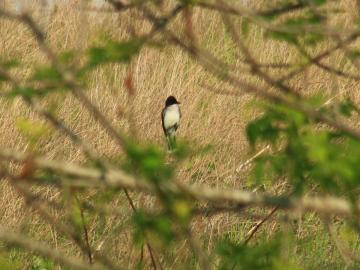
An analysis by Oak Ridge National Laboratory shows that using less-profitable farmland to grow bioenergy crops such as switchgrass could fuel not only clean energy, but also gains in biodiversity.

Energy Secretary Jennifer Granholm visited ORNL on Nov. 22 for a two-hour tour, meeting top scientists and engineers as they highlighted projects and world-leading capabilities that address some of the country’s most complex research and technical challenges.
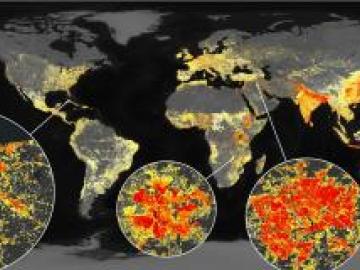
Using novel data sets and computing systems, researchers at ORNL are simulating how climate change affects the safety and security of the country.
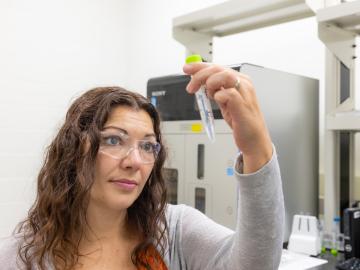
Carrie Eckert applies her skills as a synthetic biologist at ORNL to turn microorganisms into tiny factories that produce a variety of valuable fuels, chemicals and materials for the growing bioeconomy.
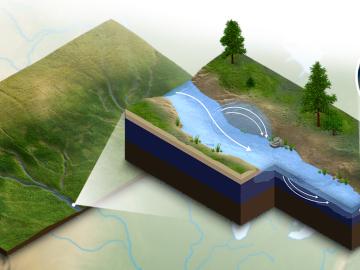
A new modeling capability developed at Oak Ridge National Laboratory incorporates important biogeochemical processes happening in river corridors for a clearer understanding of how water quality will be impacted by climate change, land use and
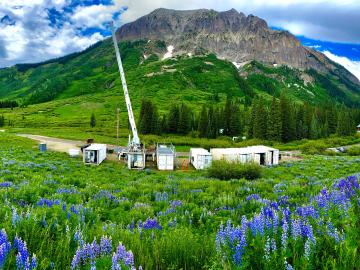
New data hosted through the Atmospheric Radiation Measurement Data Center at Oak Ridge National Laboratory will help improve models that predict climate change effects on the water supply in the Colorado River Basin.

Staff at Oak Ridge National Laboratory organized transport for a powerful component that is critical to the world’s largest experiment, the international ITER project.

An ORNL team has successfully introduced a poplar gene into switchgrass, an important biofuel source, that allows switchgrass to interact with a beneficial fungus, ultimately boosting the grass’ growth and viability in changing environments.
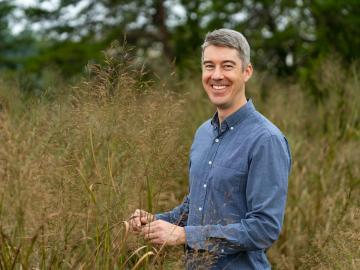
For ORNL environmental scientist and lover of the outdoors John Field, work in ecosystem modeling is a profession with tangible impacts.

A team led by ORNL and the University of Michigan have discovered that certain bacteria can steal an essential compound from other microbes to break down methane and toxic methylmercury in the environment.


